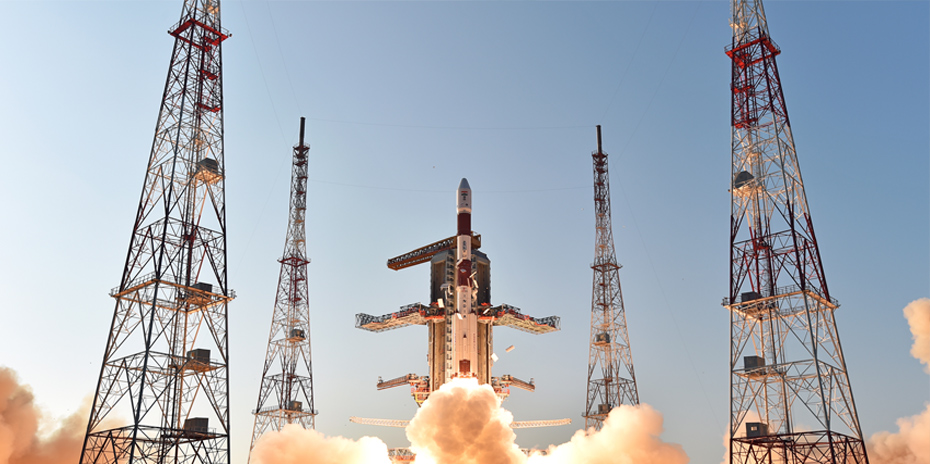
Where no one has gone before
The productivity crisis facing the pharmaceutical industry is known for past two decades. Various strategies are proposed and sometimes implemented to increase the productivity which can be defined as the number of compounds getting into clinical trials and eventually getting approved. In simple terms productivity can be defined as the amount of resource we put in to get one approved drug. One reason for the lack of productivity is the lack of diverse chemical space covered by the compound libraries in the pharma companies.
The Hitchhiker’s Guide to Galaxy says “Space is Big. Really Big. You just won’t believe how vastly hugely mindbogglingly big it is”. The statement holds true for chemical space too. The total number of small organic molecules that can be possibly made can be considered as ‘chemical space’. The estimated number of such compounds exceeds 1060, a number so vast that it truly resembles the ‘space’ especially when compared to the number of molecules we have made, or we could ever hope to make1. So, it is evident that our exploration of chemical space has so far been extremely limited. To draw analogy, we haven’t even landed on the moon of chemical space yet.
Although more than 135 million molecules have been recently reported2, in-house collections held by various corporations cover only ∼8−10 million unique molecules. The libraries need stringent curation as many of the compounds are not attractive or considered novel and are not aligned with the major trends observed in modern drug discovery. Why and how did we reached this state?
In early 1990s, the pressure on pharmaceutical R&D was building. Due to the patent expiries, the expectation was to deliver next block buster. Medicinal chemists were mistaken by the notion that they would get the new block buster if they simply made large number of compounds. Thus drug discovery became a numbers game. The advent of screening technologies and HTS boom allowed screening of large libraries of compounds in short period of time to gave ‘hits’. Over the years we have realised that the hit to lead to drug candidate conversion rate has been extremely poor due to the obvious disadvantages that got built in to this system. Medicinal chemists were forced to make changes in their synthesis strategies to satisfy the appetite of the high-throughput screening platforms. Synthesis of analogues with routine building blocks and fewer steps became the go-to strategy. Subconsciously, drug design “doability” overtook scientific rationale. “What can we synthesize” became more important than “what is the best molecule that can become a drug”. When high-throughput synthesis and combinatorial chemistry arrived the only criteria for productivity was ‘the number of molecules per chemist’.
The real synthetic and chemical diversity was lost during this period of time as only a small set of reactions and building blocks were sufficient to build libraries. Lovering et al3 had reported lack of two components in compounds for failure of large libraries- Carbon bond saturation as defined by fraction sp3 (Fsp3) and existence of chiral carbon in the molecule. Of course there are other factors such as the three-dimensional shape of a molecule can determine selectivity and potency, in addition to its physicochemical properties. Considering many factors, medicinal chemists are coming to terms that the majority of the fragments, building blocks, chemotypes and scaffolds currently populated in the compound libraries are not attractive or have limited potential. This is especially true with the discovery of novel biological targets such as protein protein interactions (PPIs). Medicinal chemistry approaches should change and evolve in tandem with the discovery of new biological targets. Currently, scientists estimate that they have identified over 400,000 PPIs (BioGRID Database Statistics). These PPIs have binding pockets of 800−2000 cubic angstrom4. Clearly the current medicinal chemistry tool box and the existing compound libraries are insufficient to provide satisfactory ligands for these targets. Medicinal chemists have started to change the strategies for targeting PPIs by including spiro and chiral centres, novel aliphatic, heteroaliphatic systems, bridged and fused rings to achieve better coverage of the 3D chemical space. The use of synthetic complexity and 3D chemical space should not be limited to complex targets like PPIs but should also be prosecuted in GPCRs, kinases, proteases, phosphatases and ion channels. Many of these targets were deemed undruggable or sometimes invalidated simply due to lack of good ligands.
The change in the medicinal chemistry strategies have shown results but as said before we have probably landed on the moon but we need to equip ourselves with novel building blocks if we have to go beyond the solar system let alone the Milky Way. There is so much more to be done. In January of 2018 Astra Zeneca published how a new five-dimensional framework had an impact on R&D productivity. Under this new framework the success rates from candidate drug nomination to phase III completion improved from 4% in 2005–2010 to 19% in 2012–2016. The authors report that “600,000 new compounds were added to the library. The emphasis has been on adding chemotypes likely to have activity at new target classes, including the addition of directed subsets such as fragments, sp3 -like compounds, natural product-like molecules, macrocycles, nucleosides and covalent modifiers”. It is beyond our imagination how the chemical space would look like with the introduction of novel building blocks.
I believe that we have just began the space exploration and in order to overcome the pharma productivity crisis we have no choice but to venture into the unknown vast space where no man has gone before.
“All Civilizations either become spacefaring or extinct” ~ Carl Sagan
- Nature 2004, 32, 823
- Nat. Rev. Drug Discovery 2018, 17, 709−727
- J. Med. Chem.2009, 522, 16752-6756
- Nat. Rev. Drug Discovery 2018, 17, 167-181